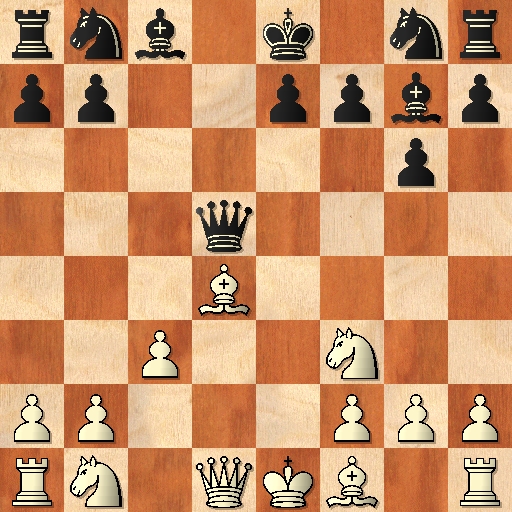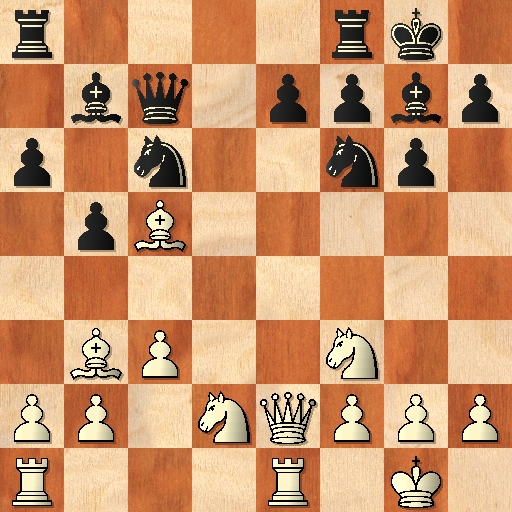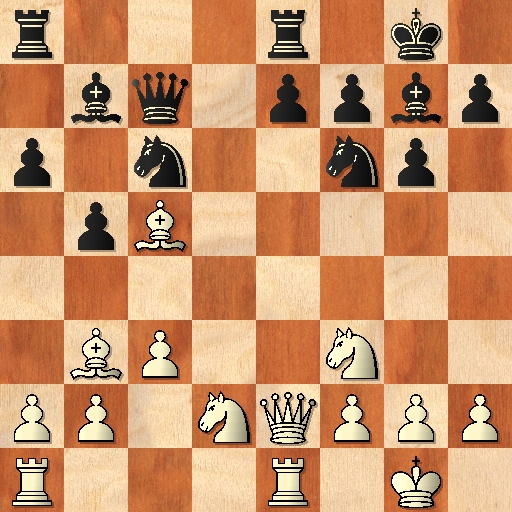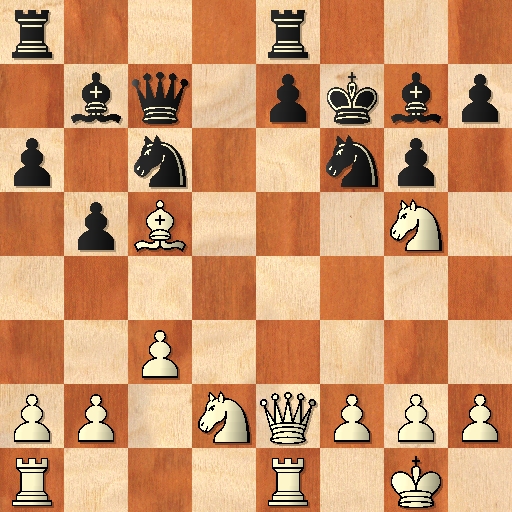One of the means I have to gauge the line-up of my neurons is to play blitz games in the Internet Chess Club: my Elo rating is still rather stable on the ICC, although the rate of blunders per game seems to increase. When I play a nice tactical combination, however, I have the feeling of rejuvenating: it is just as if somebody injected some magical youth potion in my veins, for a while.
Have a look at the following short game, which I played this evening against a similarly rated opponent (Cazzeo, 1918 5-minute Elo points). I do not find any real blemish in my moves, and the ending is rather brilliant, although by no means original.
Tonno-Cazzeo, ICC, Feb 01 2010
1.e4 c5 2.c3 d5 3.exd5 Qxd5 4.d4 g6 5.Nf3 Bg7 6.Be3 cxd4 7.Bxd4!? Nf6

A first stupid trap: 7....e5 would lose a pawn to 8.Bxe5, due to the unprotected Qd5. But black plays the best move here.
8.Nbd2 Nc6 9.Bc4 Qd8
Here my Fritz 8 says that Qf5 would have been significantly better. I agree, but there is no real flaw in the move played by black.
10.Be3 0-0 11.0-0 Qc7 12.Qe2
I am rather puzzled to see, post-mortem, that Fritz considers all the previous moves as best. Sure, the position is rather simple; and yet it feels pleasing to be able to play a string of "best" moves...
12. ... a6 13.Rfe1 b5
Another move that Fritz does not appreciate much, offering 13. ... Bf5 as an alternative. But again, the difference in the evaluation of the two positions is minimal.
14.Bb3 Bb7 15.Bc5!

Again best according to Fritz! So far all of my moves raise not an inch of criticism in the silicon brain.
15. ... Rfe8?

Black is not willing to ignore the pseudo-threat of 16.Bxe7, which is actually not possible at the moment (16....Rfe8 would win the bishop on the spot) but which puts pressure on the a3-f8 diagonal, and plays in white's hands. Here it was necessary to keep cool and play 15. ..., Rad8, or 15. ... Nd7. To the former white would reply 16.Rad1, to the latter 16.Ne4, with slight advantage in both cases.
16.Bxf7!!
A simple, but devastating sacrifice. Simple if you have seen similar things in grandmaster games of the past, of course, since it takes 14 half-moves to prove winning. Fritz 8 takes about 8 seconds to recommend Bxf7 on my computer; I took a fraction of it, but then spent about 20 seconds to verify that it was indeed winning. Black should now decline the piece and move away with the king, but he would still get in a lost position. Maybe better to go down in flames...
16.... Kxf7 17.Ng5!

The point. Maybe black had only considered 17.Qe6+ Kf8 18.Ng5, which is defensible after 18....Nd8. But white prevents that defence with the N check. If now 17....Kf8 there is not 18.Qe6 Nd8, but of course 18.Ne6+ and the black queen is lost.
17.... Kg8 18.Qe6+ Kh8
For, of course, 18....Kf8 19.Qf7 is mate. Now we witness the well-known smothered mate mechanism:
19.Nf7+ Kg8 20.Nh6++ Kh8 21.Qg8+!! Nxg8 22.Nf7 mate.
Of course 21....Rxg8 22.Nf7 mate would have been the same thing. A nice, clean combination, as it is rare to play in blitz games... Maybe some of my neurons are still hanging in there.



Comments